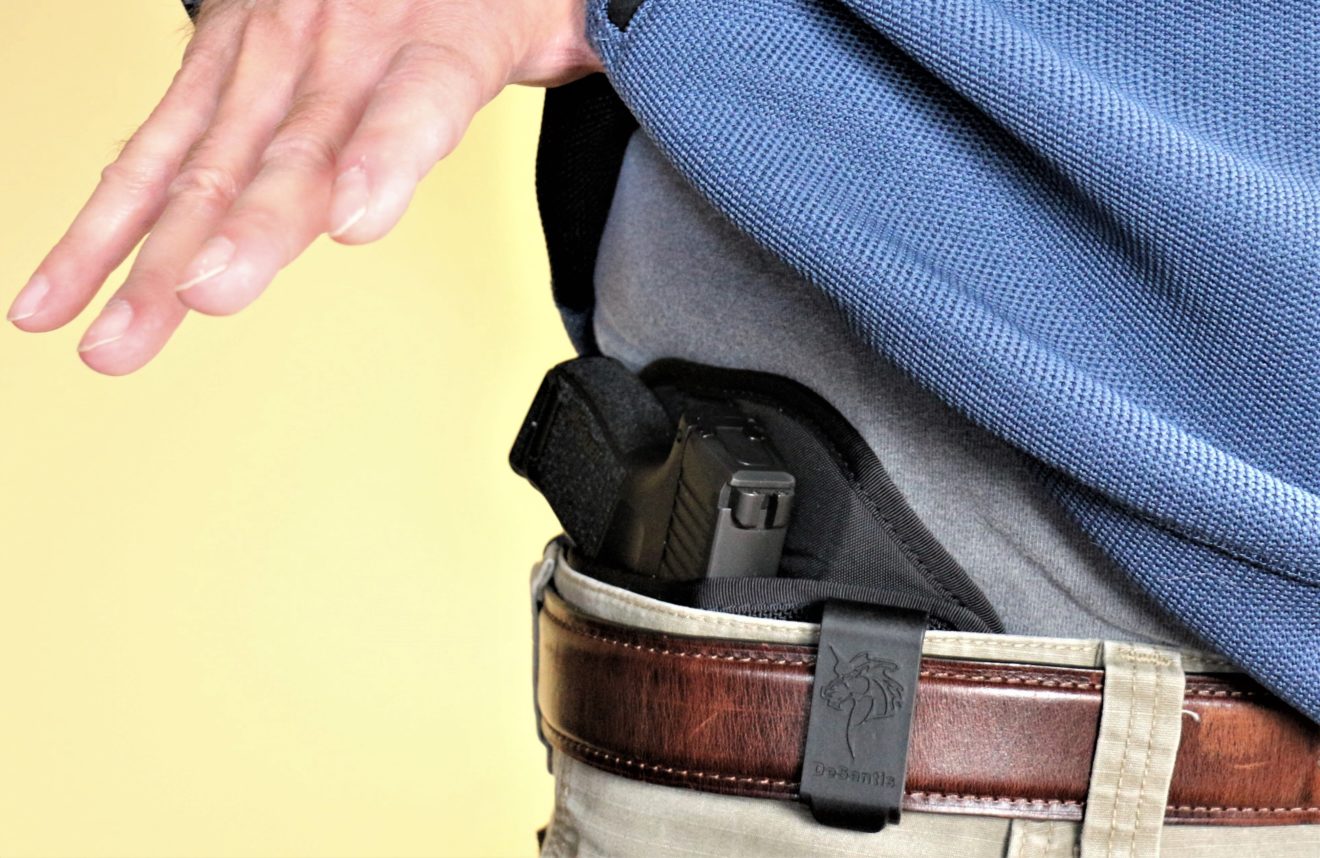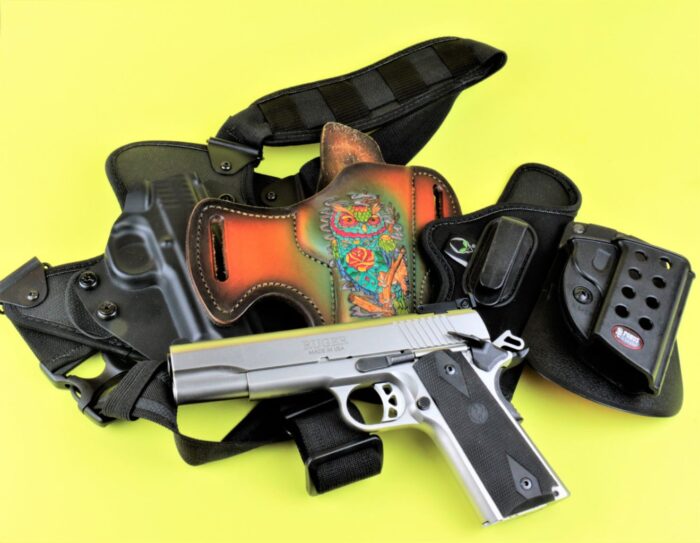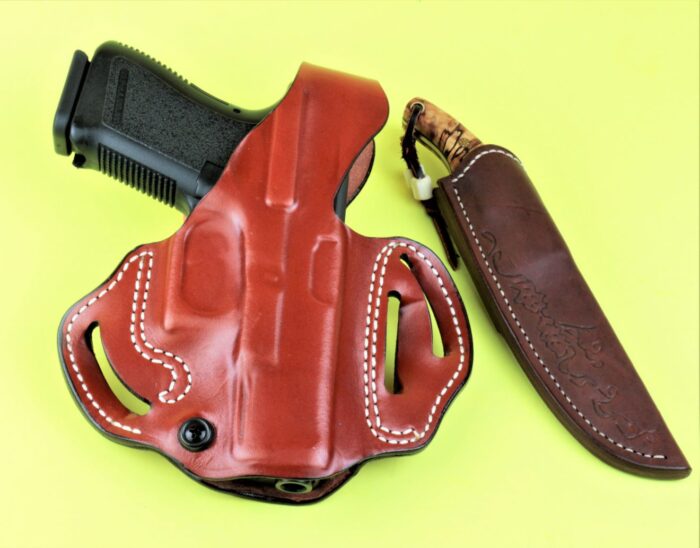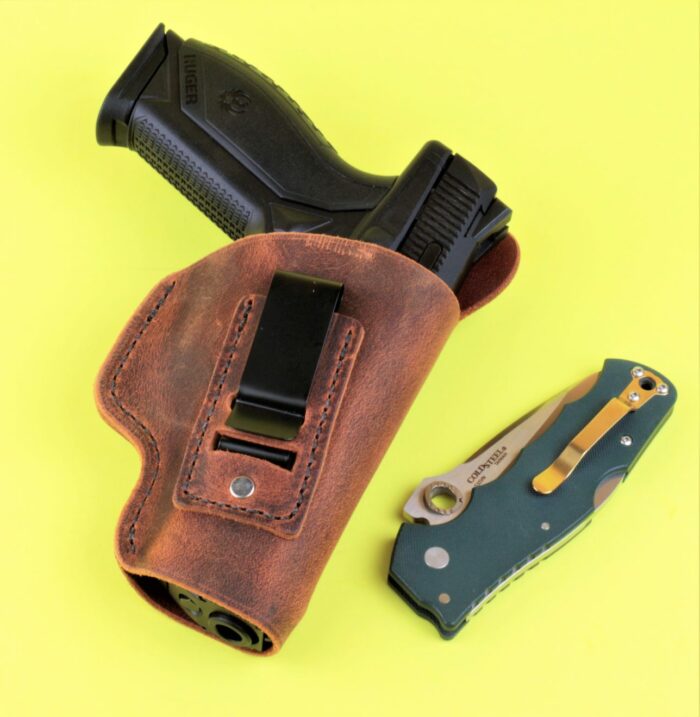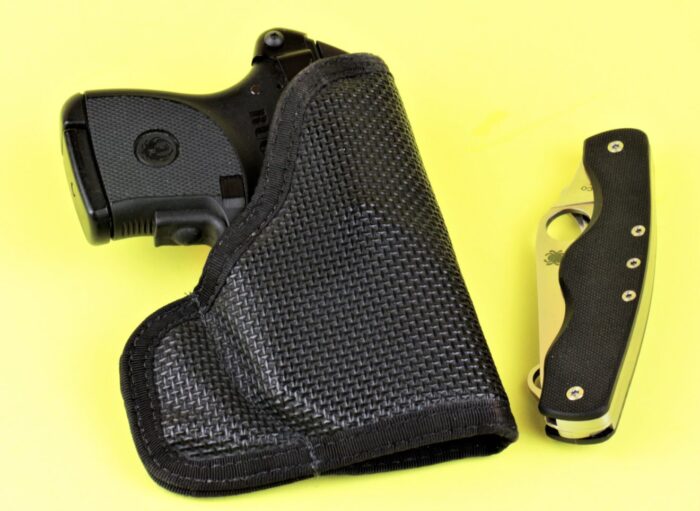How To Choose The Best Way To Carry Concealed
What is the best way to carry concealed?
First, you really have to want to do it. Making a commitment to personal defense might entail making certain changes to your lifestyle: how you train, how you dress, where you go, how you behave. Being ready for an unexpected life-altering conflict only when it’s convenient is a poor plan.
Carry Concealed: Try One, Try Them All
You might have a favorite handgun with a preferred way to carry concealed it in mind. If you are immersed in a routine where every day is like the day before, you’re all set.
Carry that same gun in the same place every day. You don’t want to reach for that gun in your waistband only to realize you’re carrying it on your ankle today. But if your activities vary from day to day, you have to be ready to adjust to the current circumstances.
I live in the Northeast. Nine months out of the year, a coat, jacket, fleece or bulky sweater is normal attire. In the rare hot weather, my “summer sloppy” style features a blousy Hawaiian shirt untucked over a baggy pair of cargo shorts. Concealed carry is easy for me.
You might not have that option. Your job might have strict dress codes. You might remove your suit jacket while sitting in on a business meeting. Or your day might include rigorous physical activity. The gun can’t be in the way.
Having Several Options Is Best
While consistency would be the ideal, it’s not always practical or realistic.
So, for your everyday carry handgun, it’s a good idea for you to have several holster options for it.
Each type of holster, each carry position has its pros and cons.
In trying to achieve an ideal balance of concealment, retention, security, comfort and access, you’ll find each method has some limitations.
Outside-The-Waistband Strong-Side Carry
For outside-the-waistband strong-side carry, you have belt holsters and minimalist belt slide rigs. There are paddle holsters that you can remove without getting half undressed.
This can be one of the most comfortable ways to carry. And it keeps the gun away from your sweaty body. If I’m hiking or otherwise covering lots ground, I might choose this way to carry.
But it requires a longer cover garment. You don’t want to expose the muzzle when you bend or reach.
Forget about taking your jacket off when you are in a restaurant.
I tend to clunk my gun and holster against things more when I wear an outside-the-waistband rig.
It’s worse with a holster than doesn’t enclose the entire slide or barrel. I don’t want to keep bashing my tritium front sight on things.
Inside-The-Waistband Strong-Side Carry
An inside-the-waistband (IWB) holster conceals a handgun better; your cover garment doesn’t need to be as long. An IWB holster keeps the handgun closer to your body and out of the way.
Some of these holsters have belt clips that allow you tuck in your shirt. They conceal the gun, but the belt clip will still be visible. A shirt tucked in around your handgun can slow access as well.
Inside or outside the waistband, access is usually pretty good with your dominant hand. And it can be done one-handed with an open-front garment. Access with your off-side hand can be difficult.
With strong-side hip carry, keeping your gun side away from an attacker during a struggle can lessen the chances of the bad guy grabbing your gun. You can ward off an attacker with your off-hand, while you can reach for your handgun, if needed, with your dominant hand.
Appendix Carry Is Popular Now
Lots of people are jumping on the appendix carry craze and holster makers are responding to the demand.
Basically, it’s a form of IWB carry with the gun positioned more toward the front with your muzzle pointing at your genitals and femoral artery.
For me, it’s very comfortable unless I’m standing, sitting or moving.
In other words I don’t find it comfortable at all. Concealment, retention, security and access are all good.
If you try it and like it, go for it. It’s just not for me.
Cross-Draw Holsters For Carrying Concealed
Cross-draw carry was preferred by some Old West lawmen because it was more difficult for someone to sneak up from behind and grab the gun from the holster.
These days, cross-draw carry has two major benefits. First, you can access your handgun with either hand. Second, it’s comfortable with easy access when you’re seated, especially in an automobile.
My gripe against cross-draw carry is that in a close quarters, face-to-face confrontation, if you keep your gun side away from your opponent, it might be possible for an attacker to pin your arm against your body as you reach for your gun.
Shouldering The Load To Carry Concealed
I liked using a shoulder holster when riding a motorcycle. But you have to keep your jacket on to cover it.
And if it’s not adjusted properly, a shoulder holster can cause strained neck and shoulder muscles.
There’s a concern too about covering yourself with your muzzle if you aren’t careful when you draw your weapon.
I like vertical shoulder holsters better. You gun’s muzzle is pointed down.
With a horizontal shoulder holster, your gun is pointing at anyone walking behind you.
Is That A Handgun In Your Pocket?
With the wide selection of small handguns these days that are chambered for effective defense cartridges, pocket carry is more viable. A pocket holster will keep lint and other debris out of your gun. It should stay in place when you draw your gun.
With pocket carry, you don’t need a jacket or vest to cover the gun. You do need a secure pocket, however. The grip might poke out of pants with shallow, slash-type pockets. Worse yet, the gun could plunk out onto the floor when you go to sit down. Very embarrassing.
Concealment and retention are good. Access is good too unless you’re sitting or trying to reach the gun with your off-side hand.
I have a pocket holsters from DeSantis Gunhide and Galco that I use most often. Clinger and Sticky Holsters work well as pocket holsters too.
Ankle Holsters Have Their Limitations
I’ve heard that some cops carry backup guns in ankle holsters. I never did when I was on the job. And I know of no one who did on a regular basis. Try running with a weight strapped to one leg. Try walking through a snow bank or sloshing through puddles and you’ll see the drawbacks.
The biggest mark against ankle carry, however, is the slow, awkward access to your gun. Do you bend, squat, lunge to a kneeling position, lift a leg against a post or on a chair to get the gun within reach?
Forget about drawing your gun while you’re moving to cover. And you need two hands: one to lift the pant leg, the other to draw the gun. Your pant legs need to be loose too; it’s difficult to wear an ankle holster with straight-leg jeans.
The ankle holster excels at concealment, however. I’ve used a Bugbite while dressed for a casual evening out during the summer. If you have a good holster, one that holds the gun firmly in place without it swinging like a pendulum, it can be comfortable if the handgun is small and lightweight.
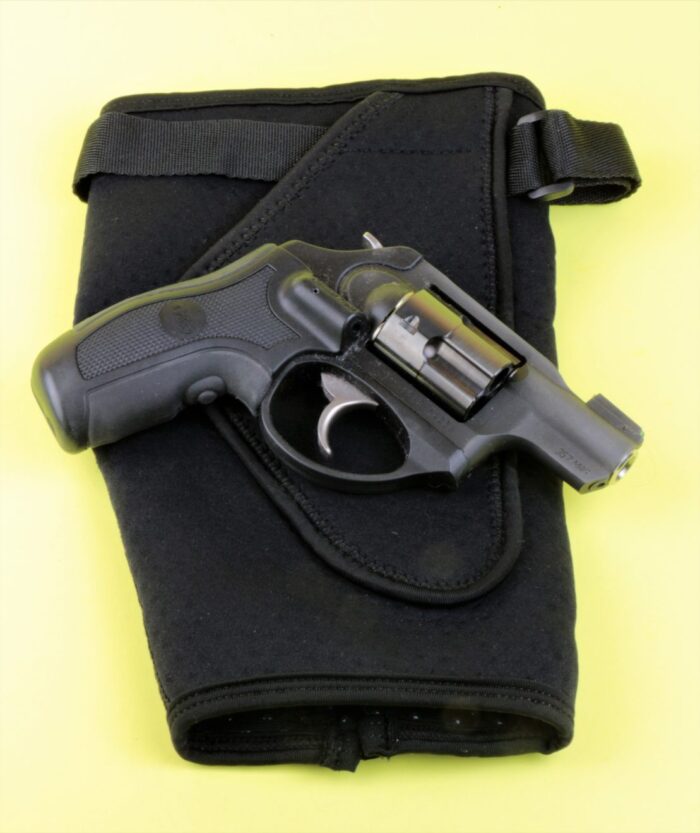
A Belly Band Provides Good Concealment
A belly band holster is another option with good concealment, security and retention. The gun can be positioned anywhere around your mid-section with a belly band. Access is quicker if your shirt is untucked.
It can hold a small gun firmly if you’re jogging or running to catch a train. It can be hot in the summer.
Carrying In The Small Of The Back
Carrying a pistol in an IWB holster in the small of the back can conceal it well. If it’s printing through your shirt or jacket you won’t know it though, because you can’t check it yourself without a mirror.
It can be uncomfortable when seated. You risk a serious back injury if you’re knocked the ground. Carrying along the back can make it difficult to defend against a gun grab during a struggle.
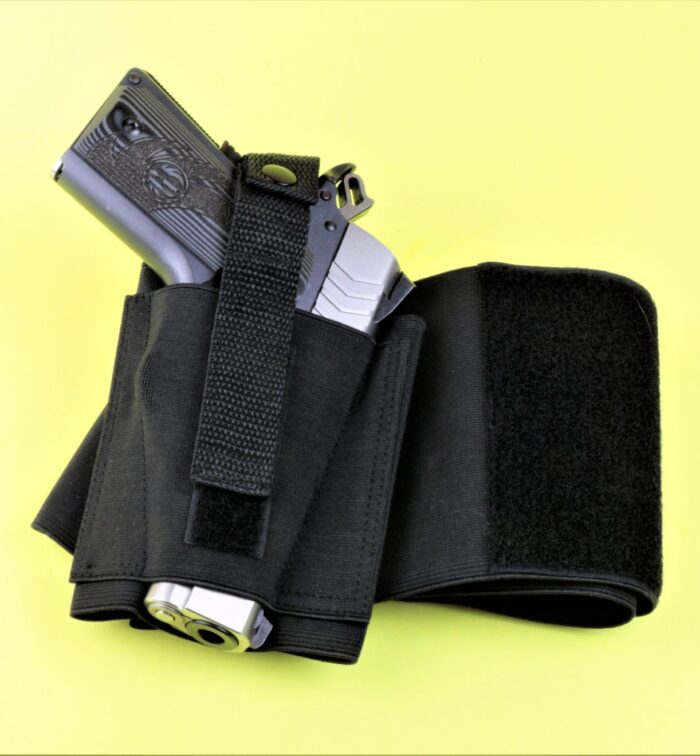
Fanny Packs Have Their Place
Some experts believe that wearing a fanny pack just screams that you are carrying a firearm. I disagree. Most people these days, even if their faces aren’t buried in their cell phones, are oblivious to what’s going on around them.
While fanny packs might not be in vogue with current urban fashion trends, I’ve used them on occasion for outdoor use when hiking or hunting. I’ve used them while bicycling too in their originally intended position over the fanny. Ones with a dedicated, quick-access handgun compartment are best.
What About Off-Body Carry?
Carrying a handgun off-body such as in a purse, messenger bag or briefcase is something I never recommend. Those things are the first a mugger will try to snatch away from you.
Set any of those things down and your firearm is out of your immediate control. Someday, you will forget. You’ll leave your purse or briefcase sitting on a table or desk. You’ll be distracted and you’ll walk away from it.
If you must carry off-body, the gun should be in a dedicated compartment. Use a shoulder strap placed over your head and across your body so it can’t be pulled away easily. Some companies make shoulder straps with steel cable inserts that are more difficult to slash.
So, What’s The Best Way To Carry Concealed?
I prefer inside-the-waistband, strong-side carry.
But at times, I have to carry elsewhere rather than leave the gun home.
Find what’s best for you, keeping concealment, retention, security, comfort and access in mind.
Buy a good holster for the gun and carry position that works for you. Practice drawing from it.
For consistency, stick with that carry method.
However, keep other options open because there will be times when you have to choose another way.
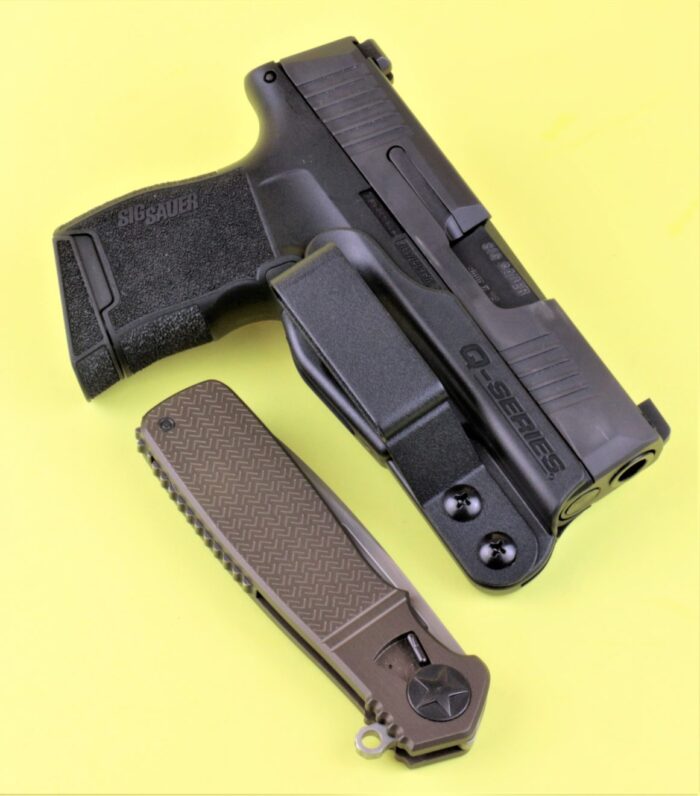
Steven Paul Barlow is a retired sergeant/station commander and former firearms instructor with the New York State Police. He is an avid hunter, fisherman, and enthusiast with all things related to firearms, knives, and survival. He has been writing on outdoor topics for more than 35 years. His collections of outdoor humor stories are available at BriarHill Books.

